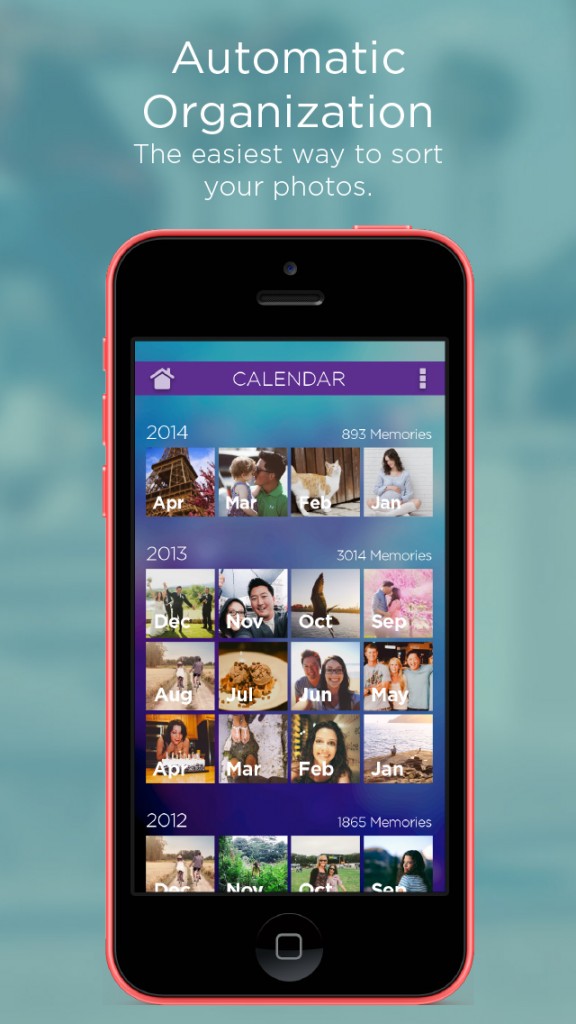Greetings CitizenTekk readers. We want to briefly introduce this new feature Stories Behind the Apps, where we will be interviewing mobile app developers on the process, pains and pleasures in creating their apps. We hope that this series gives some unique and valuable insight as you develop or think about your next app and the lessons these folks learned. If you have an app and would like to be featured as part of the series, find the link at the bottom. Now on to a unique and powerful visual library app, Trunx. Enjoy!
Tell us about Trunx! More than just an app, Trunx is a platform designed to hold your entire visual library - all of your photos in one place in the cloud, accessible to you at all times. Our vision is to be the world’s biggest memory bank.
With Trunx, users can easily browse, manage, store and share photos in addition to importing all of their visual memories from Facebook, Twitter, Instagram, and Dropbox to ensure that they never lose a moment. Users are also able to record videos via Trunx and store them directly in the cloud. The new, beautifully designed app brings usability, functionality, and design together to offer the best possible user experience in cloud-based management and mobile accessibility.
Available for free, Trunx allows users to organize and search for using tags and share any individual photo to multiple social platforms. Trunx’s SharedPix feature (available now on both Android & iOS) also allows users to create private albums to share with friends and family on the app, enabling any member of the album to contribute photos. By providing a place for people to store all of their photos from various platforms as well as videos taken with the app, Trunx ensures that everything is always accessible and easily searchable.
With Trunx, you can utilize:
- Integration: users are able to export files from Dropbox in addition to transferring and integrating photos from hard drives, phones, Facebook, and Instagram
- SharedPix: create shared photo albums for friends and family to add to and view together
- EchoPix: add audio recordings to pictures, a new, unique way to tell a story
- Organization: arrange photos by date, time, and tags to easily find a clip from any moment
How is Trunx different from similar apps? Trunx is squarely focused on the experience of making and keeping photos. We’ve designed our app specifically to solve the issue of findability and accessibility of users’ visual lives. While other players are coming into the space from a utility or storage perspective, Trunx is only focused on making peoples’ visual lives safe, secure, and always available to you no matter where you are.
Tell us about the design and UI. Our app was designed with experience and ease of use at the forefront. Additionally, we wanted to ensure that the brand was represented in the product. Our elephant mascot Max is a character designed to represent our maximum storage offer, while communicating a sense of relatability and peace to our users, knowing that their visual lives are safe and secure. You’ll see that character as well as our purple brand colors infused throughout the product.
What tools assisted you in building the app? For our design cycles, we find Flinto really helpful to mock up and test experiences on our phones. We also spent a lot of time with our community, interviewing potential consumers that came from our target markets. We spoke with moms, students, young professionals, and more, watching the way they navigated within the app and gathering their feedback.

We learned to engage with our market regularly and religiously. We learned that by involving consumers in our early design conversations, we could eliminate future confusion and frustration. Additionally, using Flinto helped us save time and avoid wasted development resources by giving the team the ability to get a feel for the experience on their phones. Even when it seems like everyone is on the same page about how something should work, there is no substitute for actual, real-time interaction.
What went right and wrong with the release? In terms of release, we found that a major misconception is finding success by achieving a Top 10 ranking in the app store. Most developers are beyond crazed with a coveted spot on that list, however, we found that this obsession can lead to poor decision making. This includes using boost campaigns to rocket your way into those top positions, when the focus really should be on internal app development and creating a tool that will make users flock to it organically. At first we almost fell into the trap, but we shifted our focus on creating an app that is exceptionally beautiful by weaving together utility, accessibility and design. Trunx’s interface and usability keeps users coming back, and since our initial beta launch less than six months ago, it has experienced an average monthly growth rate of over 190%.
Who is on the team and what are your roles? Jeff Chen - CEO & Founder, Jay Shen - CTO & Founder, Sandra Ponce de Leon - VP, Marketing , Joe Frabotta - Director of Marketing, Juan Francisco Veramendi - Lead Product Designer, Ariel Phipps - Community and Support Manager. We also have several developers working internationally.



What was the team doing prior to building Trunx? Most of us were working at other tech startups, but we came together through our love of mobile and photos. In Sandra’s case, she was leading marketing for B2B Saas company but eager to get back to her passion of consumer mobile marketing. Jeff built Maxthon from the ground up and it’s now the world’s 6th largest browser. Jay has had a number of successes - he founded Billpoint and later sold it to eBay, and more recently he work with TVU networks, a leading provider of wireless electronic news gathering equipment for broadcasters.
What other apps inspire you? While we’re working we all listen to music, so music apps like Spotify and Pandora are naturally a major source of inspiration for us. Other apps that we love and that have inspired some of Trunx’s design and interaction include Wechat, Path, Instagram and Facebook.
Head over to iTunes or Google Play to download Trunx!
